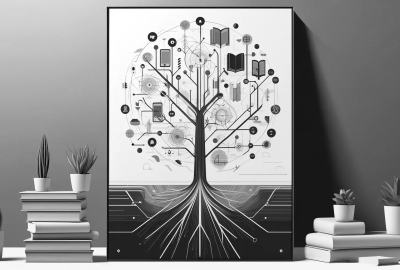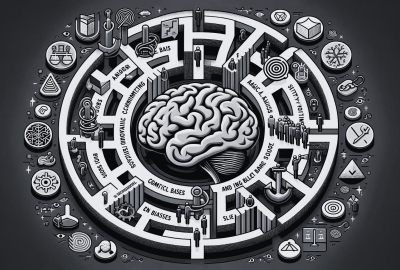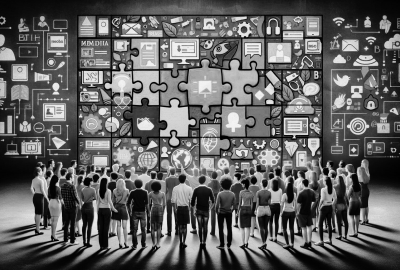Media Literacy
Mindfulness Online: Your Guide to Digital Well-Being
Not all time spent online is a time well-spent (let’s be honest – more frequently it’s not even time well-wasted). While media literacy skills are crucial for understanding and structuring the great wave of information coming our way every day, doing it while maintaining a healthy relationship with technology is another matter. This is the third article in the series produced together with the Baltic Media Centre of Excellence, where we explore the psychology behind online interactions, as well as provide tips for digital well-being.
Healthier relationships with technology include not only nurturing a more balanced proportion of time spent online and offline, but also understanding our digital actions and equipping ourselves with knowledge on how to maintain a psychologically healthy distance from negativity brought upon us by online comments.
Why do We Read Comments on Social Media?
Social media comments sphere is where information, connection, and entertainment intertwine. Despite the negativity that makes certain topics an online hot potato, comment sections can be a great tool to share (polite) opinions, broaden horizons, get feedback, and find like-minded people. Unfortunately, social media platforms, online forums and websites that allow audiences to comment on their articles often look like a war-zone, rather than a safe space for sharing and learning from others. Moreover, the discussions and comments are read even by people who don’t take part in the conversation. WHY? What is the psychological reasoning behind our desire of not only consuming the content, but also reading the comments?
Social Comparison: While reading comments, people often compare themselves to others – we tend to measure our own thoughts, actions, or life situations against those of others. This can lead to two distinct outcomes. On one hand, it may contribute to elevated self-esteem, especially when we identify with positive experiences or opinions shared by others. Exposure to different viewpoints that are not shared within our “social bubble” may broaden perspectives, contributing to personal growth. However, encountering contrasting views can lead to a sense of inadequacy or self-doubt. Consider, for example, comments on a post celebrating personal achievements. While some may find it motivating, others might suddenly find themselves feeling unfulfilled or worthless, triggering a nuanced spectrum of emotional responses and self-evaluations.
Validation: Comments can serve as a platform where the desire for validation finds expression. Whether posting an opinion, a personal accomplishment, or even a mundane observation, the engagement and approval received through comments play a pivotal role in shaping our self-worth. Consider a scenario where an individual shares their creative project. Positive comments can reinforce talents, fostering a sense of accomplishment. On the other side, even unintentional seeking validation through comments can lead to a dependency on external affirmation, potentially influencing future interactions and decisions, both online and offline.
Connection: From time to time, when similar opinions are expressed between like-minded individuals, comments forge a sense of community among people who may not see each other in person. Imagine a thread discussing a niche hobby or a social issue—participants feel connected, despite geographical distances. These digital communities become spaces where like-minded individuals gather, creating a sense of belonging.
Source of Information: When people share their thoughts, experiences, and insights, the value of a post and the overall understanding of a certain topic can be enhanced. For instance, users often share personal experiences related to the particular subject, offering a more comprehensive view that goes beyond the post’s or article's primary information. Of course – media literacy skills come in very handy here – readers should be able to evaluate the trustworthiness of any claim made online.
Entertainment: Comments often serve as a source of entertainment. Witty remarks, continuation of a joke, online drama – all sorts of engagement can entertain certain users. It has become a crucial element of the digital experience as users often create an additional layer of entertainment themselves, beyond the original content.
Nevertheless, one must be careful when reading comments. Over the recent years threats posed by artificially generated comments from bots have only grown. Bots manipulate narratives, spread disinformation, or amplify certain perspectives. To protect yourself and others, approach each and every interaction with caution. Again – evaluating information and source reliability is what allows to distinguish between the genuine and manipulated content, thus letting you have a more peaceful and informed online presence.
10 Tips for Digital Wellness
Digital wellness strongly relates to how much time we spend online. Maintaining a harmonious offline and online presence is a question of balance and self-discipline, where intentional engagement with the digital world is the key. Here you’ll find 10 easy-to-follow tips that can help to create a more meaningful online experience.
1. Set Boundaries: Create some rules for yourself. Schedule your time online so that it aligns with your daily life, designating specific times for digital activities. Ensure you steer clear of digital distractions during meals and before bedtime to be more present, mindful, and relaxed in your day-to-day activities.
2. Practice Mindfulness: Take intentional breaks. Engage in activities that require you to be completely offline, fostering a deeper connection with the present moment.
3. Prioritize Face-to-Face Interaction: Recognize the importance of personal real-life connections. Set regular time for face-to-face interactions with friends and family, and feel how those relationships blossom when not interrupted by scrolling.
4. Limit Social Media Use: Even if you’ve already set boundaries, monitor your time spent online. If you feel like you’ve been spending a bit too much time online, consider using the tools technologies already provided, such as app time limits and screen time timers, to reduce the time spent on your devices.
5. Unsubscribe from Unnecessary Emails: Declutter your digital space by unsubscribing from newsletters that no longer serve your interests.
6. Create a Digital-Free Zone: Expand the boundaries into the physical world. Decide what areas in your home should be designated as digital-device-free (e.g. kitchen table, bed, bathroom), intentionally creating a space for connection with yourself, your thoughts and feelings.
7. Turn Off Notifications: Minimize distractions by disabling non-essential apps and email notifications. This simple step can significantly enhance your focus and overall productivity, especially during work hours.
8. Practice Digital Hygiene: Make sure your digital environment is secured by regularly updating software, using complicated passwords, and avoiding public, unsecured Wi-Fi networks.
9. Get Help if Needed: Acknowledge when technology begins to impact your mental health negatively. Seek support from professionals, friends, or family members to maintain a healthy balance.
10. Take Breaks: Remember to take breaks and disconnect from technology. Make sure you have the time to recharge and reconnect with the offline world, by doing activities that bring joy and fulfilment.
Taking everything into account, the main conclusion of this article is a quite simple one: Shape your digital experience, don’t let your digital experience shape you!
Authors: Monika Hanley, Krista Luīze Priedīte

Media Literacy
Influential and sustainable? Lessons learned from research on media literacy projects in Latvia
Influential and sustainable? Lessons learned from research on media literacy projects in Latvia

Media Literacy
Cognitive Biases and Logic Pitfalls: Behind Reasoning and Decision-Making
Cognitive Biases and Logic Pitfalls: Behind Reasoning and Decision-Making

Media Literacy
The Pillars of Media Literacy and the Dynamics of Media Representation
The Pillars of Media Literacy and the Dynamics of Media Representation